The description in this article refers to a lesson for one grade level in an elementary classroom either 1st through 3rd grade. However, if a nonfiction book of a higher or lower level is used, then that would change the grade level of the lesson to the appropriate level of the nonfiction book. This is good for one Reading lesson, and it is possible that by peeling away the layers of the nonfiction book, many more mini lessons can become apparent for use in other subjects, such as Social Studies, Science, or Math. It is a good idea to start by reading the book to the students, and then have the Reading lesson. The mini lesson in various other subjects can follow that day or be during that same week.
By peeling away the layers of a nonfiction book, educators can integrate these books into various subjects and teach across the curriculum. By doing this, teachers can enrich the lives of children and their learning as well as build a foundation for lifelong learning. This article peels away the layers of the nonfiction book, Penguins, by Caroline Arnold so that it can be integrated into various subjects from Language Arts, to Math, to a foreign language.

A Nonfiction Book and Its Connection to Elementary Classroom Subjects
by Lisa71111
This article reviews the nonfiction book, Penguins, by Caroline Arnold. Then, it proceeds to link aspects of the book to various subjects for elementary classroom use.
Penguin by Caroline Arnold
This nonfiction book has a few layers to peel away as most do, but it is mostly science-based. So, the teacher may want to begin with either a Reading or Science lesson about this book.
This book begins by describing how penguins bring straw to their nests at the San Francisco Zoo. They are given bands on their wings so that their health/activities can be monitored. These are called Magellanic penguins, and some of them were nicknamed. Two of those were Humberto and Domino. I think that children would enjoy the nicknaming of the birds. I think this adds a layer of fun/playfulness to the book. The zookeepers are able to recognize the behaviors and individual personalities of these fascinating birds. Also, their habitat is as similar to the S. American one as possible at the zoo. Black volcanic rock and shrubs were used as well as a pool. The cleaners come in every other day.
The types of birds are named, and there are 6 different ones from the smallest being the yellow-eyed/”fairy penguin” (16 in. tall, 2.5 lbs) to the largest being the emperor or king penguin, standing at 3.5 ft tall and weighing in at 90lbs. The scientific and Latin names are given as well. This type of information touches on a scientific, language arts aspect as a well as a mathematical layer to the book.
The lifelike photographs of penguins give bring out an artistic and scientific layer as well. This allows the children to connect to what they are reading more readily.
Geography is also incorporated because Punta Tomba is mentioned being located in Argentina when discussing Magellanic penguins and their locations. Social studies is an additional aspect because it is stated that these penguins are named after Magellan, and it goes into a brief history of Magellan and what he did. The book goes on to describe the sizes, colors, seasons, and nesting habits, touching back on the scientific realm.
This research program at the zoo is studying the largest colony in captivity. The exhibit is called “Tuxedo Junction,” which brings back in the playfulness of the book. Then, it goes back to describing that the two species, Adelie and emperor penguins are not only of ice and snow but also live in warmer climates, which are all in S. Hemisphere. A myth is revealed that it is not always true that they live in cold areas as depicted in cartoons. This is yet another layer to this nonfiction book.
*The following highlights points made in the book that touch on various subject layers.*******
- More Science layers: How a nest is made with sticks and pebbles to protect the eggs of penguins after they are laid; zoo versus the wild (burrowing in wild vs. fiberglass holes at the zoo to lay eggs, regurgitation of food in the wild for chicks vs. not in zoo); the hatching process of the egg (the 39th day was a hatched chick; takes 2-3 days); eggs are counted & numbers are recorded; peeps are recognized by the parents by their cheeps; each chick is fed 2lbs of herring and one is stuffed with vitamins, which is recorded; 16 herring can be eaten; sterile gloves are worn to prevent disease; water is important- salt (wild) vs. fresh water (zoo); parent penguins peck the zoo keepers because they don’t like them touching the chicks(protective), so they are removed at that time temporarily; staff care for the chicks the same as the parents would; the chicks grow rapidly to 4.5 grams=20 times their weight at hatching; penguins are not afraid of people in the wild or the zoo; chicks are moved to a room temp. enclosure outside; at 2 months the mother no longer has to feed the chick; at 7/8wks old, the penguins take their first swim; they are excellent swimmers like “torpedoes;” they can travel up to 1980 miles in the wild; to rest they float on their backs; Magellanics stay 5 months at sea and the rest of the year at shore; they swim 15 mph, but they of course, cannot fly; they rely on speed to escape predators; predators include killer whales and seals; they are B&W or camouflage; their body is perfected adapted for the cold and ocean currents; their short wings are great for paddling and their feathers keep them dry; they have heavy bones so they can swim under water; they can dive 900ft deep; they must come to the surface for air; preening and molting descriptions; cold weather affects on the birds; heat escapes from their face and feet where it’s pink; burrowing and water also cools them off; penguins become “fledged,” or independent at 8/9wks; they are ready to breed at 2 years old, and it is only then that breeders can distinguish which are males and females; they can live for 30 years.
- Science/Social Studies: This research program allows people to get to know these fascinating birds. As the zoo becomes too crowded, they are sold or traded to other zoos. People destroy their natural habitat in the wild; nests are raided for eggs, etc. Therefore, the law protects them. Fishing has also lessened their food supply which also leads them to be endangered. Pollution such as oil spills and chemical waste are the greatest dangers. The future is being ensured for these tuxedo-wearing, upright walking, creatures which appeal to many around the world.
- More Language Arts layers: Adjectives and descriptive language are used such as “nestled in the dried pampass grass was a small oval egg.”
- More Mathematical layers: The dimensions of the nesting areas; 3.5 ounces=100 grams for the weight of the baby chick; 4.5 lbs=200grams for chicks;
- More playful layers: The baby chicks are named Uno and Squeaker
- Foreign Language layer: Uno=One
You might also like
Recycled Art for a Frog Themed Unit StudyRecycled children's artwork becomes classroom decorations for a frog themed u...
Frog Song for Morning MeetingSinging a song about frogs for a Morning Meeting activity is a fun, active wa...
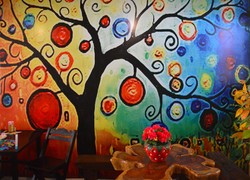

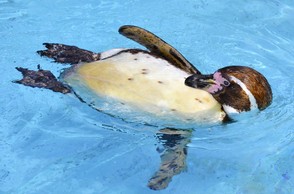
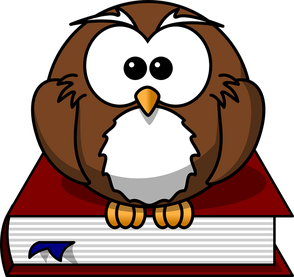
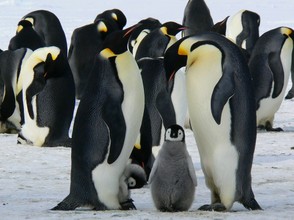
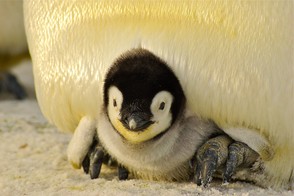





 The Utopian School Dayon 08/01/2016
The Utopian School Dayon 08/01/2016

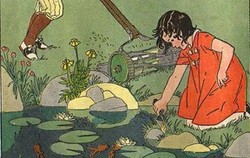
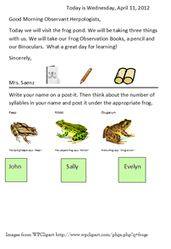
Comments
Thank you. I needed to clarify in the article that it is intended for one lesson and then successive mini lessons that become apparent when peeling away the layers of a nonfiction book.
This is a good idea, but it need be multiple such stories to carry the entire school year. And it can serve only one grade level, so many such books are needed to get through the entire elementary school years.